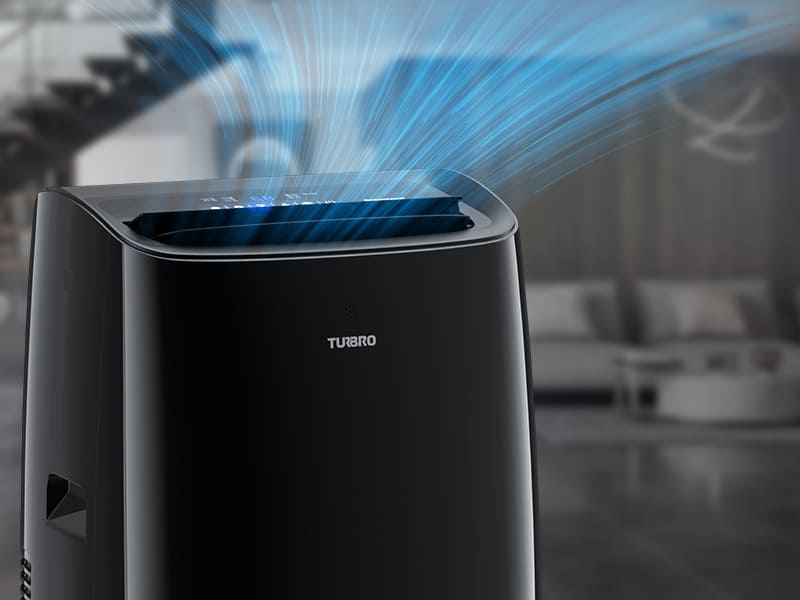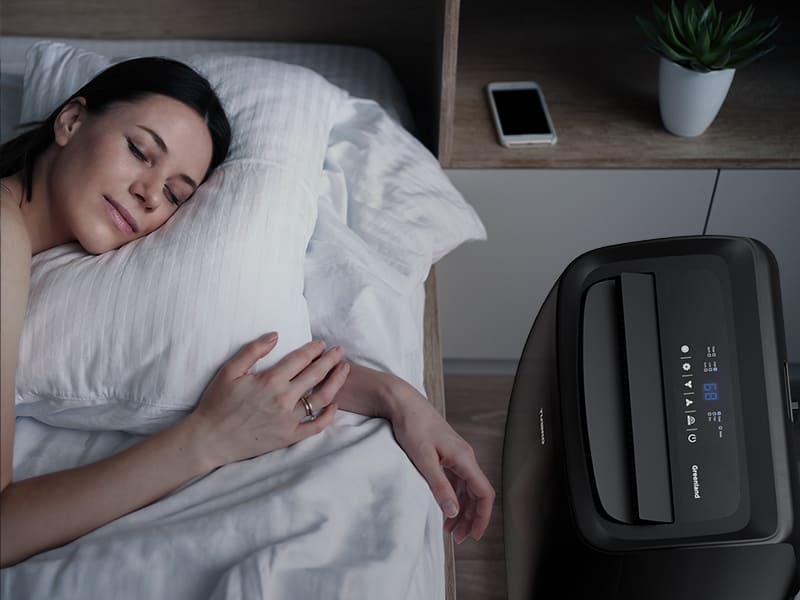Why Does My Portable Air Conditioner Have Two BTU Ratings?
Our customer support team has been receiving a few questions lately regarding the two different BTU ratings on our new line of Greenland Portable Air Conditioners.
After a few cases of replying to each customer individually, we decided that it was time for us to put out an official guide on the two different BTU ratings on portable air conditioners. This way we can educate our current customers and help others make an informed and intelligent buying decision.
Keep reading to learn more about why your portable air conditioner has two different BTU ratings and what it means for you!
1. Previous ASHRAE Rating
| 8,000 BTU (ASHRAE Rating) | 10,000 BTU (ASHRAE Rating) | 14,000 BTU (ASHRAE Rating) | 14,000 BTU (ASHRAE Rating) |
The ASHRAE rating is a result of the testing method used for window air conditioners. For ease of testing, this same test has been applied to portable air conditioners so that comparisons can be made for shoppers looking to purchase a supplemental air conditioner for their homes.
However, the real efficiency rating of portable air conditioners is not accurately expressed using the ASHRAE formulae.
The reason why is that, for a portable air conditioner to work, it must blow hot air out through the exhaust hose. The air that is blown out through the exhaust hose creates an air vacuum that must be replaced from somewhere else, so warm air “leaks” into the room through door leaks, cracks around the window, and other sources.
Window air conditioners do not have this problem because the part of the machine that exhausts hot air is already outdoors, so it does not create this air vacuum in the room you are trying to cool.
2. New DOE/SACC Rating
|
|
|
 |
|
| 5,000 BTU (New DOE) | 6,000 BTU (New DOE) | 10,000 BTU (New DOE) | 10,000 BTU (New DOE) |
In order to address these issues, the US Department of Energy (DOE) put forth new testing standards that more accurately represent the “real” cooling effect of portable air conditioners. This new standard may also be called the SACC rating, or the seasonably adjusted cooling capacity.
This new testing standard takes into effect heat generated by the unit itself and warm, humid air that is sucked into the room as hot air is exhausted out the window through the exhaust hose.
Traditional customers may have been confused why their 10,000 BTU portable air conditioner didn’t feel like it cooled the room as effectively as their 10,000 BTU window air conditioners. This new testing standard from the US Department of Energy aims to clear that up by providing a more accurate representation of the portable air conditioner’s cooling capacity.
3. What does this mean for you?
Not much! The internal components all remain the same, just the testing standards used to determine how effective the air conditioner will be at cooling the room have changed.
Because portable air conditioners are marketed as an appliance that can cool a single room, they often get compared to other types of room air conditioners which can more efficiently cool the room than a portable air conditioner unit.
If you wanted to purchase a portable air conditioner that was as effective as a window air conditioner at cooling your room, you would need to buy a portable AC with a BTU rating that is much higher than the BTU ratings on your window AC.
We’re biased towards portable air conditioners because of how easily they can be moved from room to room to provide cool comfort where you need it most.
4. Why do we use both ratings?
This isn’t the best answer, but, “that’s the way it has always been.”
Because most customers are not familiar with the new BTU ratings from the DOE, they may be confused and think that units that are labeled with the DOE rating only are less efficient than those with the previous ASHRAE rating.
Also, the Federal Trade Commission mandated that all air conditioners contain this updated testing information on those yellow energy guide labels you find on air conditioners and other appliances.
Our long-term hope is that the older ASHRAE rating will eventually be phased out from all TURBRO packaging and packaging from other portable air conditioner manufacturers, but we are not sure when that might be.
5. Does this mean that my unit is any less effective?
Not at all.
Although the way that portable air conditioners are tested and given BTU ratings is different, the real-time cooling capacity and internal components all remain the same.
The biggest difference you will notice is that the box or the product listing might list both types of BTU ratings.
If you are browsing for a portable air conditioner and it only lists one BTU rating, you must double-check whether that is the older ASHRAE rating or the new, lower DOE rating.
6. What if I have more questions?
If you have any other questions about your portable air conditioner BTU rating or any product questions at all, please send us an email at support@turbro.com so a member of our team can help you out! Or try converting BTUs to kW here.












2 comments
Buenos dias , hemos perdido la mangera o tubio de uno de mis aparatos de aire que le compramos , (TURBRO Greenland 7.000 BTU / 2,0 kW Acondicionado Portátil 3 en 1, Ventila y Deshumidifica, para habitaciones de hasta 25 m², modo de sueño, incluy) como puede hacerme de esa mangera o tubo igual ?? y el precio ??
what size would i need for a 20×20 room. with both ratings